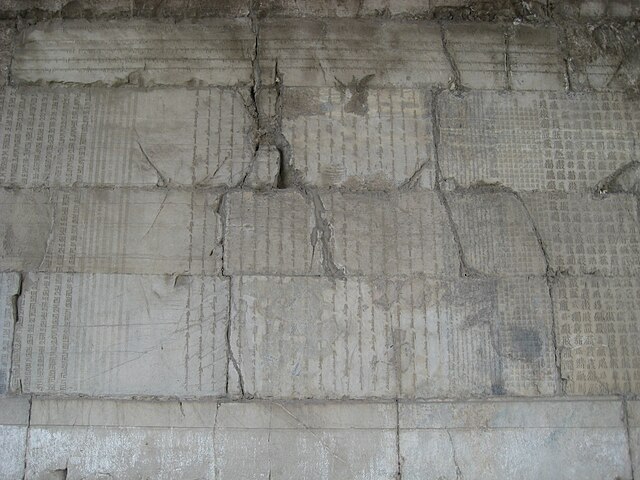The Old Uyghur alphabet was a Turkic script used for writing Old Uyghur, a variety of Old Turkic spoken in Turpan and Gansu that is the ancestor of the modern Western Yugur language. The term "Old Uyghur" used for this alphabet is misleading because Qocho, the Uyghur (Yugur) kingdom created in 843, originally used the Old Turkic alphabet. The Uyghur adopted this "Old Uyghur" script from local inhabitants when they migrated into Turfan after 840. It was an adaptation of the Aramaic alphabet used for texts with Buddhist, Manichaean and Christian content for 700–800 years in Turpan. The last known manuscripts are dated to the 18th century. This was the prototype for the Mongolian and Manchu alphabets. The Old Uyghur alphabet was brought to Mongolia by Tata-tonga.
Yuan dynasty Buddhist inscription written in Old Uyghur on the west wall of the Cloud Platform at Juyong Pass
Yuan dynasty Buddhist inscription written in Old Uyghur on the east wall of the Cloud Platform at Juyong Pass
Slave contract
Yuan era epitaph
Old Uyghur was a Turkic language which was spoken in Qocho from the 9th–14th centuries as well as in Gansu.
Uyghur inscription on the east interior wall of the Cloud Platform at Juyong Pass.
Uyghur inscription on the west interior wall of the Cloud Platform at Juyong Pass.




